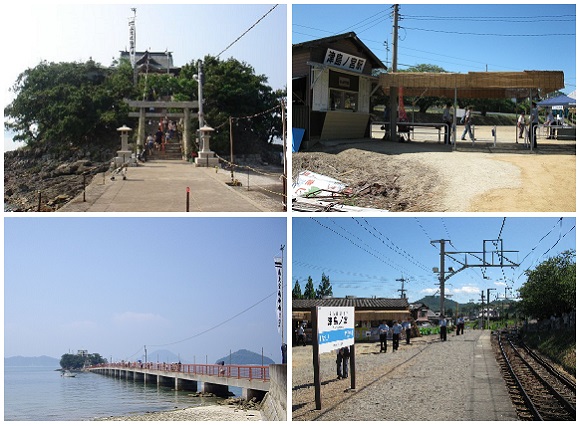
Without a doubt, one of the things Japan is best known for is trains. And it’s not just marketing hype either–public transportation is apparently good enough to accommodate the decreasing number of Japanese youth getting driver’s licenses. But while most trains can be counted on to run from 5 am to 1 am every day of the week in the cities, that’s not always the case in rural areas.
Take Tsushima no Miya station in Kagawa Prefecture, for example, where the train has the most limited schedule in the country: It’s only open two days out of the year!
Shikoku, an island with four prefectures just south of the mainland of Japan, certainly fits the bill when it comes to “rural” with a population of just over four million people spread around Ehime, Kagawa, Kōchi, and Tokushima Prefectures. Which means that many of the train lines run on much more limited schedules than urban places like Tokyo.
▼Shikoku, indicated in off-brown
However, most trains still manage to run a fairly regular schedule, making it possible for residents and travelers to get around the island. Tsuhi no Miya Station, on the Yosan Line in Kagawa Prefecture, is the notable exception. Open only two days a year, August 4 and 5, the station serves but one function: To help people get to Tsuhima Jinja, a shrine built on a small rock island in the middle of the bay. But if it’s the only station serving the shrine, why in the world is it open only two days a year??
▼Tsuhima Jinja, not an easy place to get to
First, a bit of history about the island shrine. Tsushima Jinja was primarily seen as offering protection for cattle during the Edo period, after a disease killed much of the cattle in Japan, but left the local animals unscathed. However, in the Taisho period, many parents came to the shrine to pray for their children, seeking to protect them from disease. While that might seem like a bit of a wild connection, is there really that big of a difference between raising calves and raising children? According to my mother after seeing my room, not really.
▼”Moooom, you just don’t understand me!”
However, the shrine isn’t open for visitors just any day of the year. If you’re looking for some spiritual protection for your child, you’ll have a very narrow window of time to stop by the shrine each year–like the train station, it’s only accessible to the public during the summer festival on August 4 and 5. We suppose the deity is busy protecting everyone’s children the rest of the year, so it makes sense.
But, wait, how do they keep people off the island? Well, in the past, people used to cross over to the island shrine by boat, but now a lengthy foot bridge is available to worshipers.
Since the bridge is the only way people can get across without a boat, a simple but clever method is used to deter mischievous youth and other troublemakers from trespassing on the island for the other 363 days a year. They take out the planks!
▼”You shall not pass!” Gandalf should have thought of this…
Of course, since the shrine and station are only open for a scant 48 hours, the station itself isn’t much to look at. In fact, the ticket counter looks more like a tool shed than a station!
▼This is the “platform.” Watch your step!
While the facilities are certainly very…um…quaint, it honestly seems like a bit of overkill. After all, just a single tent seems like all you would need for a station that’s only used two days a year. Except that over those two days, the shrine gets over 10,000 visitors. Which is like having a Tokyo anime convention on a tiny island in the middle of the ocean…
Of course, the station is also a hot spot for tecchan, Japan’s train otaku, who love to collect tickets from all over the country. We can imagine that adding a Tsushima no Miya station ticket to your collection would be a major point of pride for many of our locomotive-loving friends!
So, if you’re looking for something to do this summer, why not head down to Shikoku and visit the shrine? At least you’ll be doing all your waiting in line in the middle of some beautiful scenery!
Sources: Japaaan, Wikipedia (Tsushima no Miya Station), Wikipedia (Tsushima Jinja), Mitoyo City
Images: Mitoyo City, Wikipedia (Toto-tarou), Wikipedia (Unamu), Wikipedia (LERK), Wikipedia (Jim Champion)

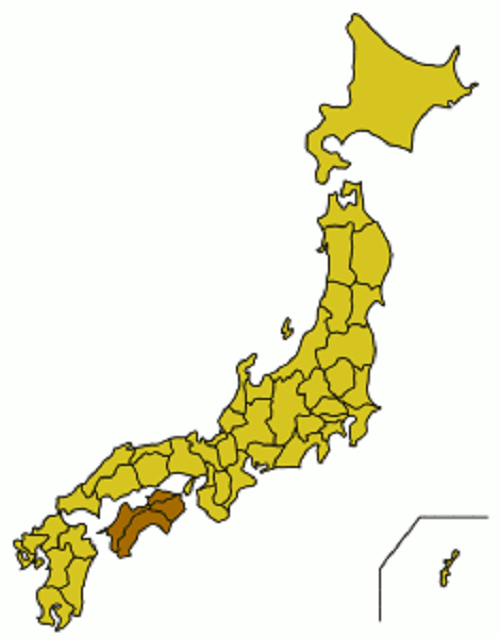
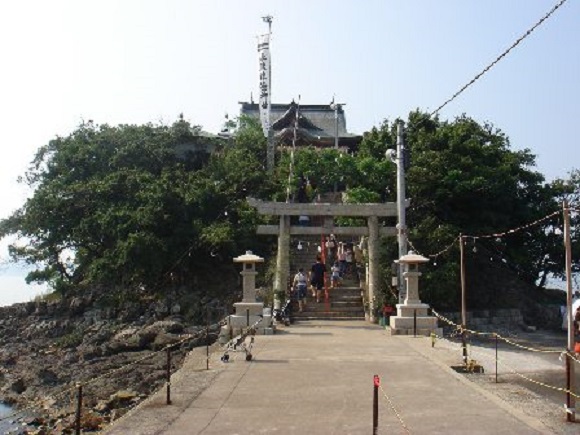

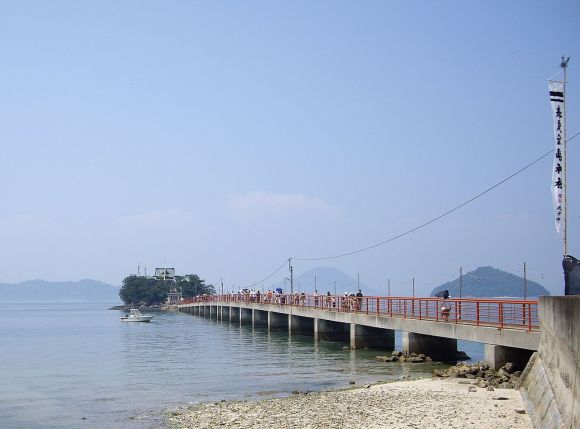
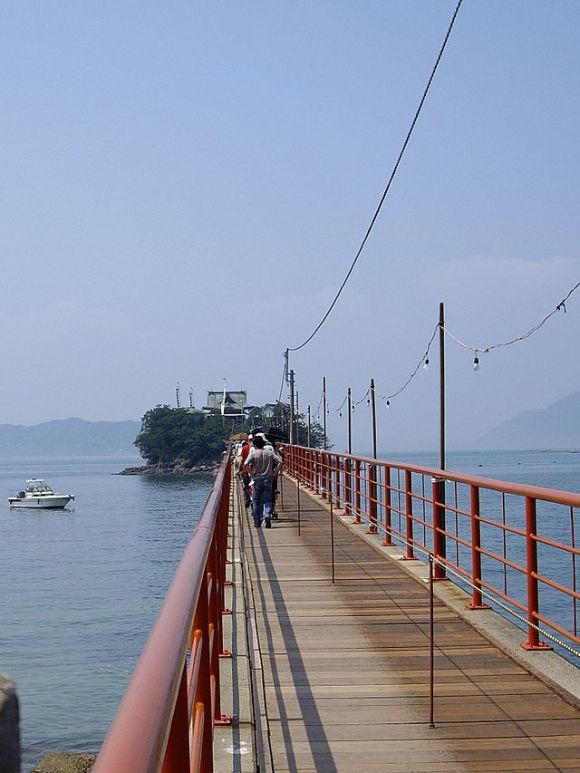

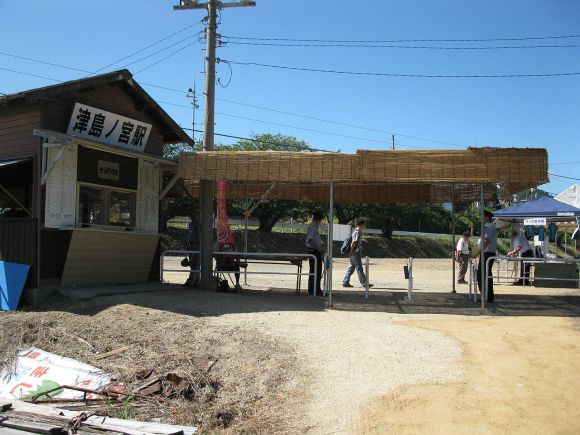

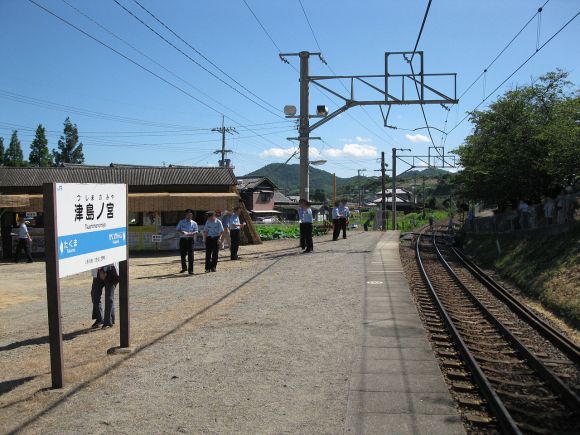
 Typhoon destroys real Ghost of Tsushima island shrine torii gate, crowdfunding campaign launched
Typhoon destroys real Ghost of Tsushima island shrine torii gate, crowdfunding campaign launched There’s a shrine and strange scene waiting for you at the top of this Japanese train station
There’s a shrine and strange scene waiting for you at the top of this Japanese train station The weird and wonderful things people leave behind on Japanese trains
The weird and wonderful things people leave behind on Japanese trains 12 beautiful Japanese train stations by the sea
12 beautiful Japanese train stations by the sea Japan’s Top 10 Scenic Train Trips–according to two “densha otaku” train guides
Japan’s Top 10 Scenic Train Trips–according to two “densha otaku” train guides Disillusionment at Tsukiji’s tourist-target prices led us to a great ramen restaurant in Tokyo
Disillusionment at Tsukiji’s tourist-target prices led us to a great ramen restaurant in Tokyo KFC Japan introduces a new burger 8 years in the making
KFC Japan introduces a new burger 8 years in the making Japan may add Japanese language proficiency, lifestyle classes to permanent foreign resident requirements
Japan may add Japanese language proficiency, lifestyle classes to permanent foreign resident requirements Start saving room now – Japanese grocery store’s biggest sushi roll yet is coming for Setsubun
Start saving room now – Japanese grocery store’s biggest sushi roll yet is coming for Setsubun Homeless dropout becomes Lamborghini-driving ladies’ man and top host in Kabukicho 【Video】
Homeless dropout becomes Lamborghini-driving ladies’ man and top host in Kabukicho 【Video】 Lacquerware supplier to emperor of Japan and Pokémon team up for new tableware
Lacquerware supplier to emperor of Japan and Pokémon team up for new tableware Japanese woman mistaken for bear
Japanese woman mistaken for bear One Piece x McDonald’s Japan collaboration burgers: Does the treasure taste as good as it looks?
One Piece x McDonald’s Japan collaboration burgers: Does the treasure taste as good as it looks? Evangelion original anime studio Gainax is now completely dissolved, Eva’s creator mourns ruined friendships
Evangelion original anime studio Gainax is now completely dissolved, Eva’s creator mourns ruined friendships Japanese people demand that Gackt taste the government’s old old old rice
Japanese people demand that Gackt taste the government’s old old old rice 7-Eleven Japan starts new temporary luggage storage service in over 300 branches
7-Eleven Japan starts new temporary luggage storage service in over 300 branches Starbucks teams up with 166-year-old Kyoto doll maker for Year of the Horse decorations【Photos】
Starbucks teams up with 166-year-old Kyoto doll maker for Year of the Horse decorations【Photos】 Tokyo’s Tsukiji sushi neighborhood asks tour groups to stay away for the rest of the month
Tokyo’s Tsukiji sushi neighborhood asks tour groups to stay away for the rest of the month Starbucks Japan releases new zodiac chilled cup drink for 2026
Starbucks Japan releases new zodiac chilled cup drink for 2026 Street Fighter Hadouken Churros to be launched and eaten in Tokyo, Okami pudding on offer too
Street Fighter Hadouken Churros to be launched and eaten in Tokyo, Okami pudding on offer too Is this the most relaxing Starbucks in Japan?
Is this the most relaxing Starbucks in Japan? Starbucks on a Shinkansen bullet train platform: 6 tips for using the automated store in Japan
Starbucks on a Shinkansen bullet train platform: 6 tips for using the automated store in Japan Large amount of supposed human organs left in Osaka marketplace
Large amount of supposed human organs left in Osaka marketplace Japan’s human washing machines will go on sale to general public, demos to be held in Tokyo
Japan’s human washing machines will go on sale to general public, demos to be held in Tokyo Japanese train company is letting fans buy its actual ticket gates for their homes
Japanese train company is letting fans buy its actual ticket gates for their homes Tokyo considering law requiring more trash cans following litter increase in heavily touristed area
Tokyo considering law requiring more trash cans following litter increase in heavily touristed area Is China’s don’t-go-to-Japan warning affecting tourist crowds in Tokyo’s Asakusa neighborhood?
Is China’s don’t-go-to-Japan warning affecting tourist crowds in Tokyo’s Asakusa neighborhood? Nintendo’s Kirby now delivering orders at Kura Sushi restaurants, but not in Japan
Nintendo’s Kirby now delivering orders at Kura Sushi restaurants, but not in Japan Tokyo event lets you travel back in time, for free, to celebrate 100 years since Showa era start
Tokyo event lets you travel back in time, for free, to celebrate 100 years since Showa era start Survey asks foreign tourists what bothered them in Japan, more than half gave same answer
Survey asks foreign tourists what bothered them in Japan, more than half gave same answer Japan’s deadliest food claims more victims, but why do people keep eating it for New Year’s?
Japan’s deadliest food claims more victims, but why do people keep eating it for New Year’s? We deeply regret going into this tunnel on our walk in the mountains of Japan
We deeply regret going into this tunnel on our walk in the mountains of Japan Studio Ghibli releases Kodama forest spirits from Princess Mononoke to light up your home
Studio Ghibli releases Kodama forest spirits from Princess Mononoke to light up your home Major Japanese hotel chain says reservations via overseas booking sites may not be valid
Major Japanese hotel chain says reservations via overseas booking sites may not be valid Put sesame oil in your coffee? Japanese maker says it’s the best way to start your day【Taste test】
Put sesame oil in your coffee? Japanese maker says it’s the best way to start your day【Taste test】 The top 10 annoying foreign tourist behaviors on trains, as chosen by Japanese people【Survey】
The top 10 annoying foreign tourist behaviors on trains, as chosen by Japanese people【Survey】 No more using real katana for tourism activities, Japan’s National Police Agency says
No more using real katana for tourism activities, Japan’s National Police Agency says Starbucks Japan reveals new sakura drinkware collection, inspired by evening cherry blossoms
Starbucks Japan reveals new sakura drinkware collection, inspired by evening cherry blossoms You can go surprisingly far on a single train leaving from Tokyo Station
You can go surprisingly far on a single train leaving from Tokyo Station Japanese island with a population less than 10 is a hidden gem you won’t find in travel guides
Japanese island with a population less than 10 is a hidden gem you won’t find in travel guides Amazing time-lapse-style video shows 150-year history of the growth of train stations in Japan
Amazing time-lapse-style video shows 150-year history of the growth of train stations in Japan
Leave a Reply